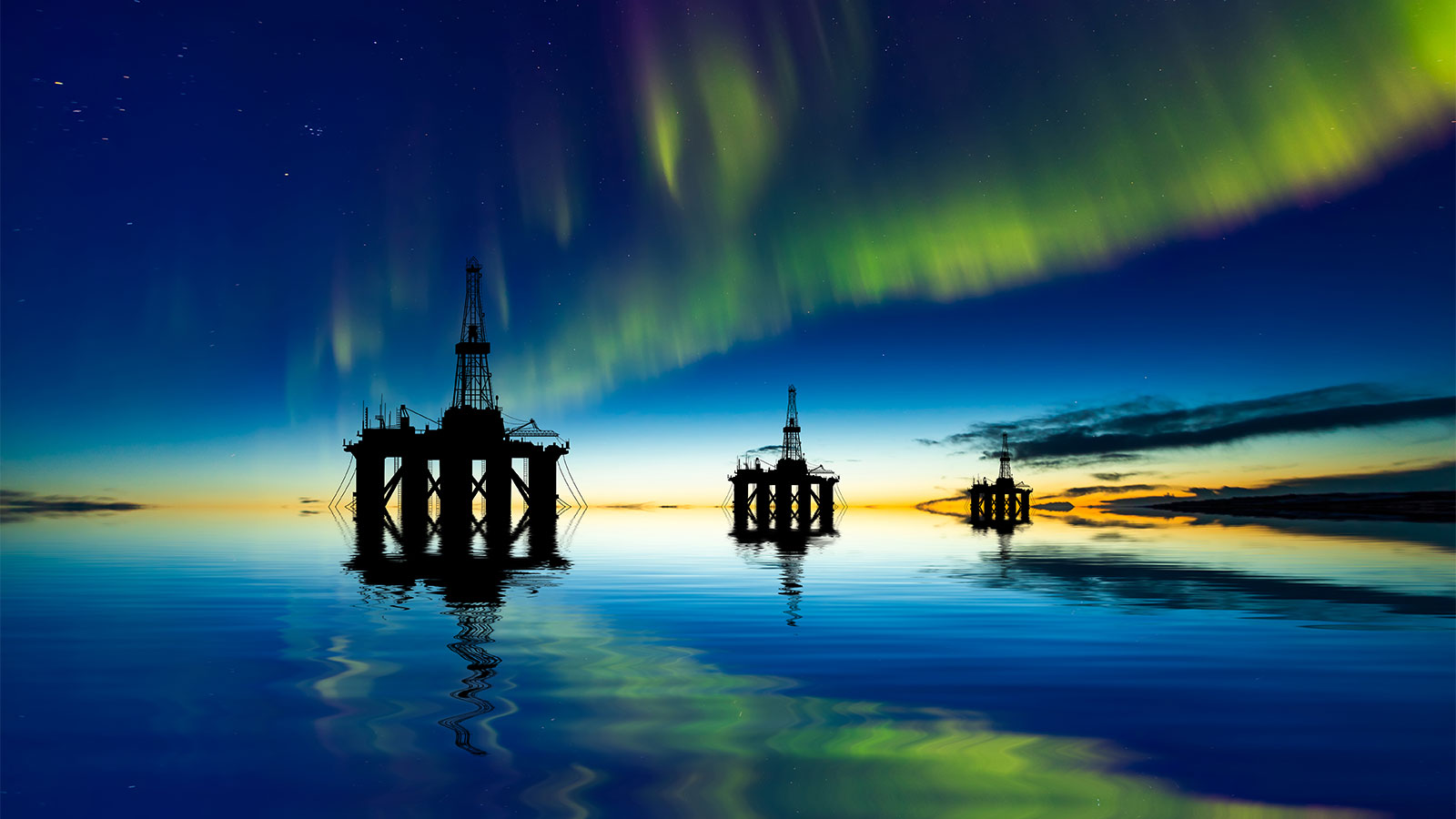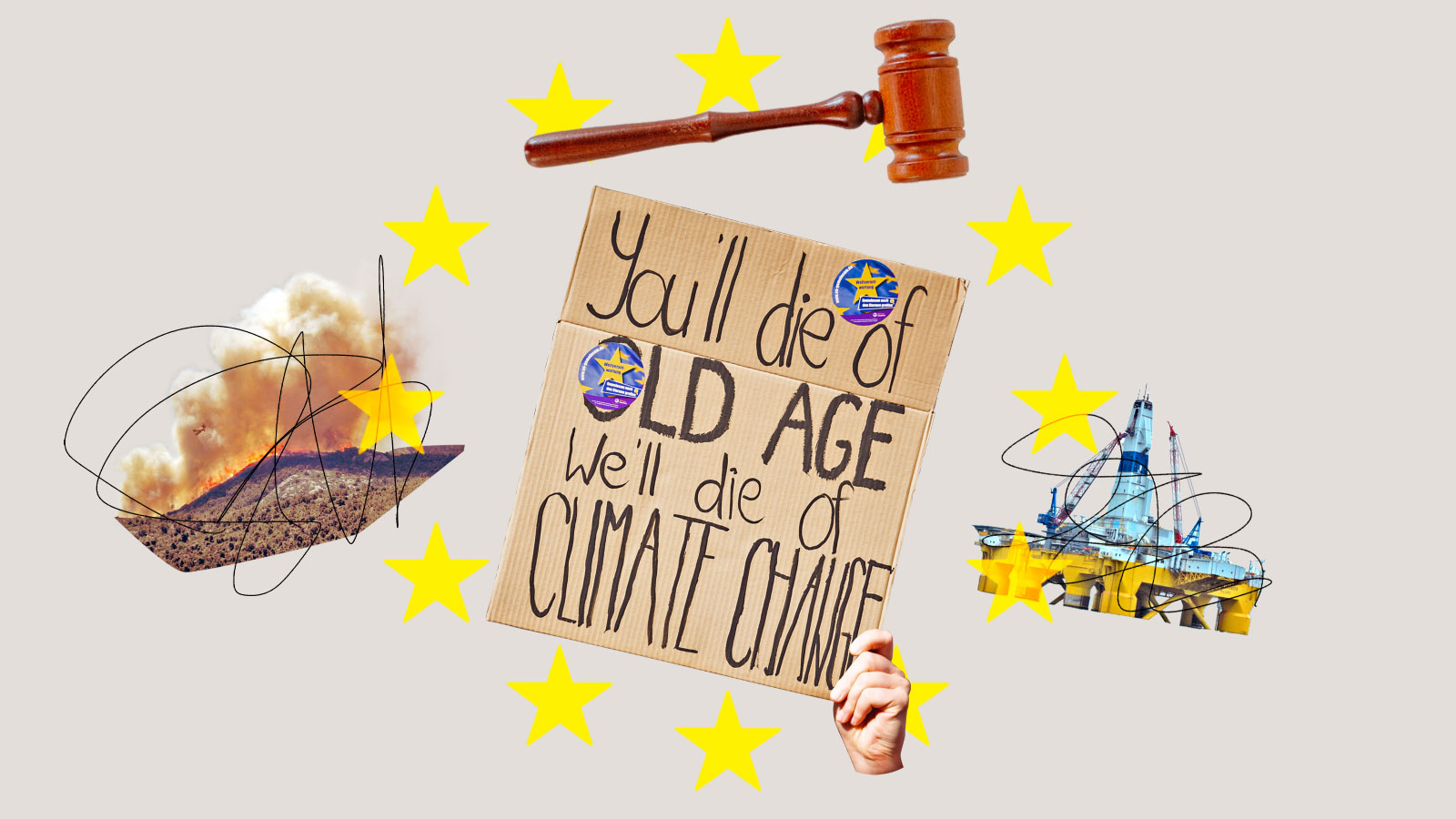As a 10th-grader growing up in Bergen, Norway, Mia Chamberlain dreaded when her science class lesson was on climate change. She’d often skip those classes or sneak out of the classroom. She couldn’t handle the fear when confronted with projections of scorching droughts and devastating floods — a future that she would have to live through, despite having grown up in a country as wealthy and safe as Norway. It was like the breathless, stomach-churning feeling of being broken up with, the moment a future vanishes. She couldn’t understand how her science teachers could discuss it with the same detached calm of instructing an algebra class. “It was like sitting through a horror movie that you really don’t want to be watching,” said Chamberlain, who is now 23.
Around that time, nearly 2 million barrels of oil and other fossil fuels were being drilled each day from Norway’s continental shelf, much of it sold elsewhere. Adults around her didn’t seem to understand Chamberlain’s frustration. She felt afraid, lonely, angry, anxious, and deeply unhappy — a tide of emotions she now describes as climate anxiety, a diagnosis that is receiving more and more attention from scientists, psychologists, and now, courts.
In 2016, she and five other young activists, along with Greenpeace, Young Friends of the Earth, and other environmental groups, filed a lawsuit against the Norwegian government over 10 licenses for oil and gas exploration in Arctic waters off Norway’s coast. According to the United Nations and the International Energy Agency, planned fossil fuel production efforts are already enough to topple the world’s climate over 1.5 degrees Celsius (2.7 degrees Fahrenheit) of warming. Given that, the lawsuit reasoned, any new drilling licenses would be unsustainable and violate the youths’ fundamental right to a livable future.
In doing so, Chamberlain and her compatriots joined frustrated citizens around the world who are increasingly resorting to suing their governments over fossil fuel emissions, with mixed victories. In one of the most successful cases, initiated in 2015 by the Dutch non-profit Urgenda, domestic courts ordered the Dutch government to reduce its carbon emissions faster, which it subsequently did.
Norwegian courts, however, rejected the Arctic drilling lawsuit, reasoning that it was uncertain how much fossil fuels — and resulting emissions — would be produced. Determined, the group took the case to the European Court of Human Rights in Strasbourg, which has the power to order governments to change harmful policies. “I really, really think that Norway should be one of the first countries to stop their oil drilling,” Chamberlain said. “I really hope that this case can help take a step in that direction.”
Last December, the Strasbourg court asked Norway to respond to the charges — a significant step, given that the court throws 15 percent of cases out before reaching that point — making the lawsuit one of only three climate cases to have ever made it this far. That includes a case brought by a group of senior Swiss women and a lawsuit in which four Portuguese children and two young adults are suing 33 European governments over inadequate climate policies. What also makes the Arctic oil case remarkable is that, along with the Portuguese lawsuit, it cites climate anxiety alongside physical impacts to support its claims that the youths’ fundamental rights are breached by government policies.

Both cases use a nascent but growing body of research illustrating the severity and magnitude of climate anxiety among young generations. In one recent, landmark study, some 10,000 children and young people surveyed around the world reported strikingly high levels of psychological distress due to governments’ inaction on climate change — often to the extent that it interfered with their daily functioning.
Invoking such evidence of psychological harm, experts say, strengthens the legal arguments made in climate lawsuits, not unlike how climate science itself has become key in establishing the risk of physical, life-threatening impacts of climate change. Climate anxiety research “will be central in future climate cases,” said Gerry Liston, a legal officer at the Dublin-based Global Legal Action Network, a nonprofit that’s representing the young people in the Portuguese lawsuit.
Key to success in both the Norway and Portuguese lawsuits is making a strong case that the plaintiffs risk experiencing harm through their governments’ policies on climate change. Mental and physical well being often falls under Article 8 of the European Convention on Human Rights, the right to respect for private and family life — a catch-all provision that protects against a range of issues from unregulated nightclub noise to verbally abusing students in front of their classmates. Evidence that Chamberlain and the other youths are experiencing climate anxiety could help the court to recognize a violation of Article 8, which both cases have invoked.
Importantly, evidence of climate anxiety also helps demonstrate that the youths have already suffered from government policies. Many of the plaintiffs have seen physical impacts to date — two Indigenous Sámi youths in the Norwegian case, for instance, note that the Sámi struggle to maintain their culture and livelihoods in a warming Arctic, while the young Portuguese activists saw wildfires tear through their country, killing 120 people in 2017. But the most severe physical impacts will occur in the future, notes César Rodríguez-Garavito, an international human rights expert at New York University. By contrast, “the apprehension and the mental distress about future harms — that’s all happening now,” he said.
Because climate anxiety disproportionately affects young people, it may also help overcome a common reason for rejecting climate lawsuits: that climate change affects everybody equally, so courts can’t address claims brought by specific groups. For similar reasons, the climate anxiety argument also helps make a case for violations of Article 14, which guarantees equal enjoyment of rights and freedoms, notes Michelle Jonker-Argueta, an attorney at Greenpeace International supporting the Norway case. “I think it’s actually quite heartbreaking to think that you’re growing up with the knowledge that your life will not be the same, that you don’t have the same rights …as your parents or your grandparents,” she said.

In a move that surprised many legal experts, the European Court of Human Rights introduced another element to the Portuguese case. When it decided to move forward with the case in 2020, it not only asked parties to comment on violations of human rights cited in the activists’ initial complaint, it decided to expand the case’s scope, asking parties to also consider a possible violation of Article 3, the human right to freedom from torture and inhuman or degrading treatment. “That’s the first time the court has certainly ever done this,” Liston said. “It’s never found a breach — let alone introduced the article into the case by itself … in a true environmental case.” To him, that’s a promising sign that the court recognizes the gravity of climate impacts, because the severity required to meet an Article 3 violation is generally much greater than for Article 8.
Climate anxiety research could be important in demonstrating that states are ill-treating young generations, said Natasa Mavronicola, a human rights scholar at the University of Birmingham in the United Kingdom. In the past, the Court has frequently found that ill-treatment applies to mental as well as physical suffering — and even that the threshold of an Article 3 violation can be met through mental harm alone — albeit in very different circumstances. For instance, one 2008 judgment determined that the constant mental anxiety experienced by prisoners held in Bosnia and Herzegovina, caused by the mere threat of physical violence, was a key factor in meeting the Article 3 threshold. As a result, the court ordered the government to pay several thousand euros to each prisoner in damages. The court could apply the same principle to government inaction on climate change, which is similarly causing “fear of facing unimaginable and irreparable harm through climate catastrophe,” Mavronicola said.
Recognizing that states violated Article 3 would be a significant step for the court, she said. Some legal scholars argue the right has a special status due to the cultural implications of torture and ill-treatment, and should be applied cautiously, notes Corina Heri, a human rights researcher at the University of Zürich in Switzerland. Article 3 also protects an absolute right, meaning that governments must always fully guarantee it. That’s why, if successful, the argument could push the court towards a more far-reaching decision, and require states to take much stronger action on climate change than if Article 3 wasn’t in play, Liston says.
Any ruling that psychological harm infringes on human rights would have far-reaching repercussions, Rodríguez-Garavito said. It would empower litigants in domestic courts across Europe to pursue that argument, strengthening their own cases — and could influence courts in Africa or Latin America that closely follow developments in European human rights law.
Courts in the U.S. are generally immune to international influence, he adds. But for years, the nonprofit law firm Our Children’s Trust has included claims of mental harm, including trauma, depression, and other psychological injuries while litigating cases on behalf of youth, writes Julia Olson, the firm’s executive director. Psychological harm was also invoked in a 2015 constitutional climate lawsuit the firm argued on behalf of 21 youth plaintiffs, Juliana v. United States. Though the 9th Circuit Court of Appeals acknowledged this evidence in its 2020 ruling, it still ultimately dismissed the case, arguing that the plaintiffs lacked standing to sue — although Olson is still pushing for a trial. “U.S. courts have put up greater barriers to access to justice, mostly at the appellate levels,” she said via email, “but once we beat back those arguments, and these youth finally have access to their own courts, trial judges in the United States will hear the evidence.”

In April, the Norwegian government argued that the youths’ claim should be deemed inadmissible, adding that Russia’s war on Ukraine — and the resulting shortage of Russian fossil fuels to power Europe — justifies more oil and gas exploration. In addition to the evidence both parties present, the court might have its own considerations, such as wanting to keep its already-overflowing caseload manageable, added Heri. It might worry that acknowledging that climate anxiety constitutes a human rights violation would spur millions of future cases. Though that concern applies to every kind of case the court sees, “it particularly applies to climate change cases, which could potentially be brought by anyone and everyone affected by it,” Heri adds. The European Court of Human Rights could also simply reject the cases due to legal technicalities or other reasons. “We’re in such uncharted territory here that it’s very hard to say how it’ll assess this,” Heri said.
Now a psychology student, Mia Chamberlain knows that while too much fear and anxiety can make one completely passive to pressing problems, a certain amount of it can be a good thing. In fact, it was her anxiety in high school that prompted her mother to suggest participating in a political organization, and Chamberlain joined Young Friends of the Earth. Ever since, activism, going to demonstrations, and helping with the lawsuit have helped keep her anxiety at bay and made her realize that she’s not alone in recognizing what’s at stake. Living a privileged life in one of the world’s richest countries, she said, it would be easy to simply ignore climate change and not do much about it. “But I’m not able to, and I think that’s because of the fear that drives me to do something.”



